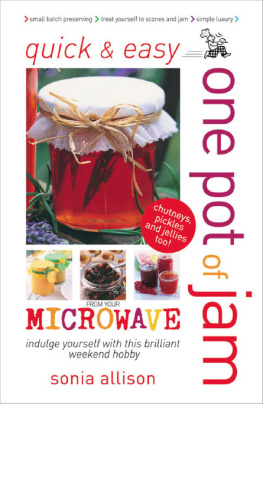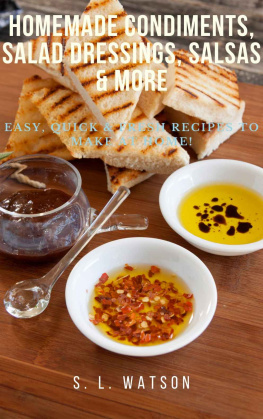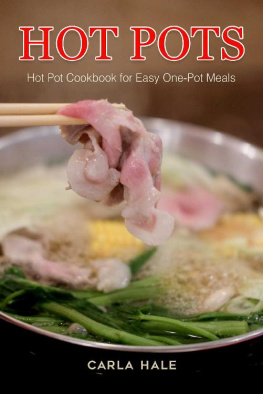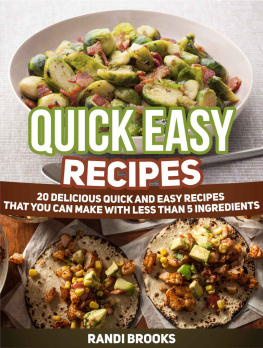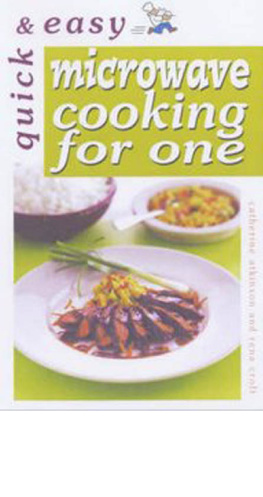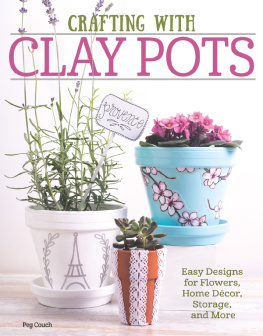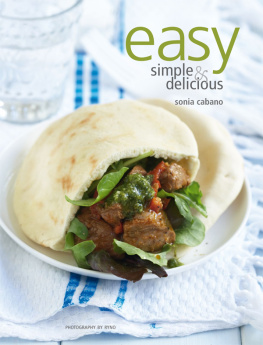Copyright 2008 W. Foulsham & Co. Ltd
Previously published as Luxurious Jam and One Pot of Luxury Preserve from the Microwave
The Copyright Act prohibits (subject to certain very limited exceptions) the making of copies of any copyright work or of a substantial part of such a work, including the making of copies by photocopying or similar process. Written permission to make a copy or copies must therefore normally be obtained from the publisher in advance. It is advisable also to consult the publisher if in any doubt as to the legality of any copyright which is to be undertaken.
W. Foulsham & Co. Ltd
Introduction
Welcome to a whole new creative concept in the kitchen: Fortnum & Mason meets Mrs Beeton!
How many times have you treated yourself to a jar of those extravagantly expensive and exotic jams or chutneys on display in the best supermarkets and stores? Or perhaps you have received one as a Christmas or thank-you gift. You know the sort of thing: Middle Eastern Fig and Honey Jam with Lemon, or Strawberry and Star Fruit Preserve with Grenadine.
With this book, you can create those amazing recipes and many, many more in your own kitchen with not much more than a large bowl, a wooden spoon, and that microwave which you often wish didnt take up so much space when you only use it for reheating and baked potatoes.
Whats more, you can forget that out-dated image of vats of blackberries bubbling on the stove after all, who wants to have only one choice of marmalade for breakfast or jam for your scones (biscuits) throughout the year? All these intriguing and delicious recipes are designed so that you make just one or two pots at a time. That way you can try out all sorts of exotic flavour combinations without ending up with more pots of jam than you can eat.
Fun to make, delicious to eat, and great as unusual and personal gifts dust off your microwave and give them a try! It could be the start of a fascinating and deliciously rewarding new hobby.

High-tech Luxury Preserves
There are so many advantages to creating unique preserves in the microwave that its difficult to know where to start, but the sensible, small quantities must be a good option. Added to that, there is minimal mess since, as long as you follow the simple instructions, spillage and boiling over does not present a problem and little or nothing sticks and burns on to the cooking utensils. You wont get a hot, steamed-up kitchen, and smells are contained within the microwave. Heavy pans to scour are a thing of the past, while the interior of the microwave is easily wiped clean with a soft cloth.
Using the microwave gives you total and safe control as the power can be turned off at the press of a button or by opening the microwave door. And dont forget that power costs are much lower than with conventional cooking. Microwave preserves form hardly any of the scum you find when you cook on the stove, so theres no need to remedy the problem by stirring in butter.
Finally, of course, the results are stunning! The flavour of the preserves retains the freshness and quality of the original ingredients and the colours stay clear and bright. You can take advantage of the vast range of unusual ingredients now so readily available in the supermarkets.
All the recipes in the book have been tested on a microwave with a high-power wattage of 750800 watts, a medium setting of 550 watts and a defrost, simmer or medium-low setting of 170300 watts. Before you start to cook, check the settings on your own microwave and make sure you use the correct one for each recipe. Make a note in the front of this book for reference so you wont have to look them up again.
Equipment and Utensils
A well-equipped kitchen will already have everything you need.
Use a large, shatterproof glass bowl for cooking. It should not exceed 4 litres/7 pts/16 cups in capacity. You can use a light-coloured, lightweight plastic bowl but it must be suitable for microwave use. Do not use Melamine as it absorbs heat, becomes uncomfortably hot to handle and slows down the cooking process. A china-type bowl, with no metal trims, may also be used.
You will need a lid to cover the bowl. You can use the shatterproof glass bowl lid if it has one, a microwaveable plate or a plastic lid.
Use a wooden spoon for stirring, never metal as the handle may become overheated and burn your hand. Avoid plastic and rubber spatulas as they could disintegrate in the heat of the preserve. When stirring, always protect your hand with an oven glove in case the hot mixture splashes on to your hand. Have a plate or spoon rest near the microwave on which to lay the spoon between stirrings.
If you are making jellies, you will need a fine jelly bag or a very fine nylon sieve (strainer).
Youll also need a few saucers on to which to spoon a little of the preserve again using your wooden spoon to test whether it has reached setting point.
Youll need an adequate supply of jars, and its a good idea to make a habit of collecting suitable glass jars so you always have them ready when you feel creative. Dont make the preserve first and then search for jars! If you are making chutney or other preserves containing vinegar or lemon juice, do not use jars with metal lids as the vinegar will react with the metal. Some commercial pickle jars have plastic-coated lids, and these are fine.
For some recipes, youll need a square of muslin (cheesecloth) to hold stones (pits) or spices. For some of the chutneys, pickles and salsas, an opened-out large paper coffee filter bag, wrapped securely round the herbs and spices, is just as effective as a parcel of muslin, provided there are no sharp pieces that could pierce the paper.
It is easier to fill jars without getting a messy work surface and sticky jars if you use a wide-necked funnel and a ladle. Standing the jars on a sheet of newspaper also makes clearing up easier.
Packets of jam pot covers, as they are called for preserves, are readily available in two sizes for large and small jars. Top the hot preserve with one of these greaseproof (waxed) paper discs. Cover with the lid, or cellophane secured with an elastic band, only when the preserve is completely cold (otherwise expect mildew).
Ingredients
Fruit and vegetables should always be good quality and in good condition and fruit should be just ripe. Squashy and over-ripe produce will result in mildew and a poor set. The only exception here is garden windfalls, which are inevitably damaged as they fall but quite satisfactory to use if the bruised patches are cut away and the fruit is still fresh.
Because of the risk of pesticide residue, all shop-bought fruit and vegetables should be washed thoroughly and dried before use. Even organic produce should be rinsed well in case it has been handled by other customers.
For some recipes, removes stones (pits) during preparation to save time. The methods give full instructions.
To ensure a good set and for a slightly shorter cooking time, the best sugar to use is jam sugar, which is granulated sugar with added natural pectin and citric acid, although for some preserves marmalade, for example ordinary granulated sugar gives satisfactory results. Preserving sugar didnt work for me because its larger granules took too long to dissolve in the microwave and in some cases stayed in crystals, despite being thoroughly stirred; but you can use it if you are careful to make sure the sugar has fully dissolved before you proceed with the recipe. Brown sugars are fine for chutneys and pickles and different kinds have been recommended throughout the book where appropriate.

